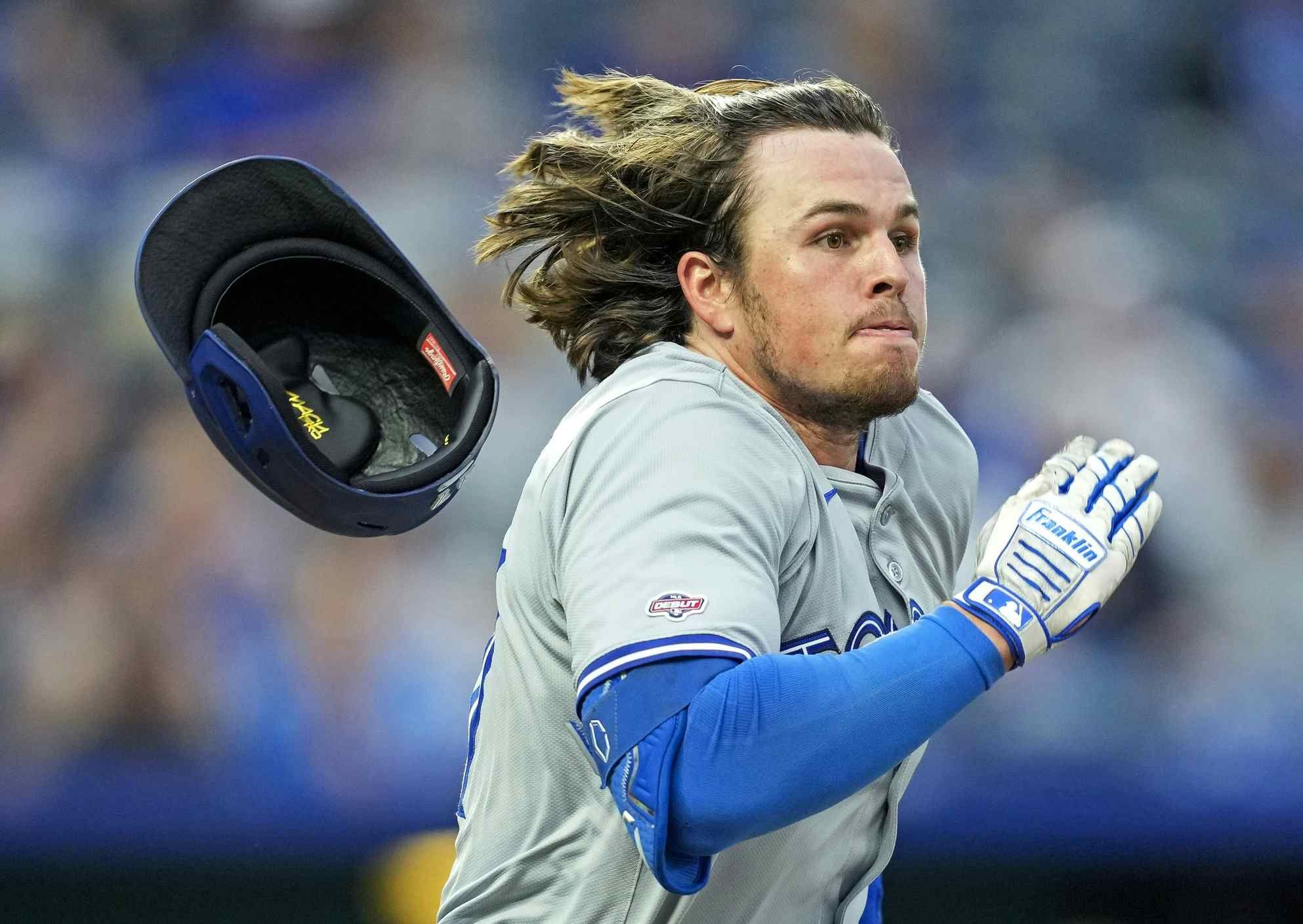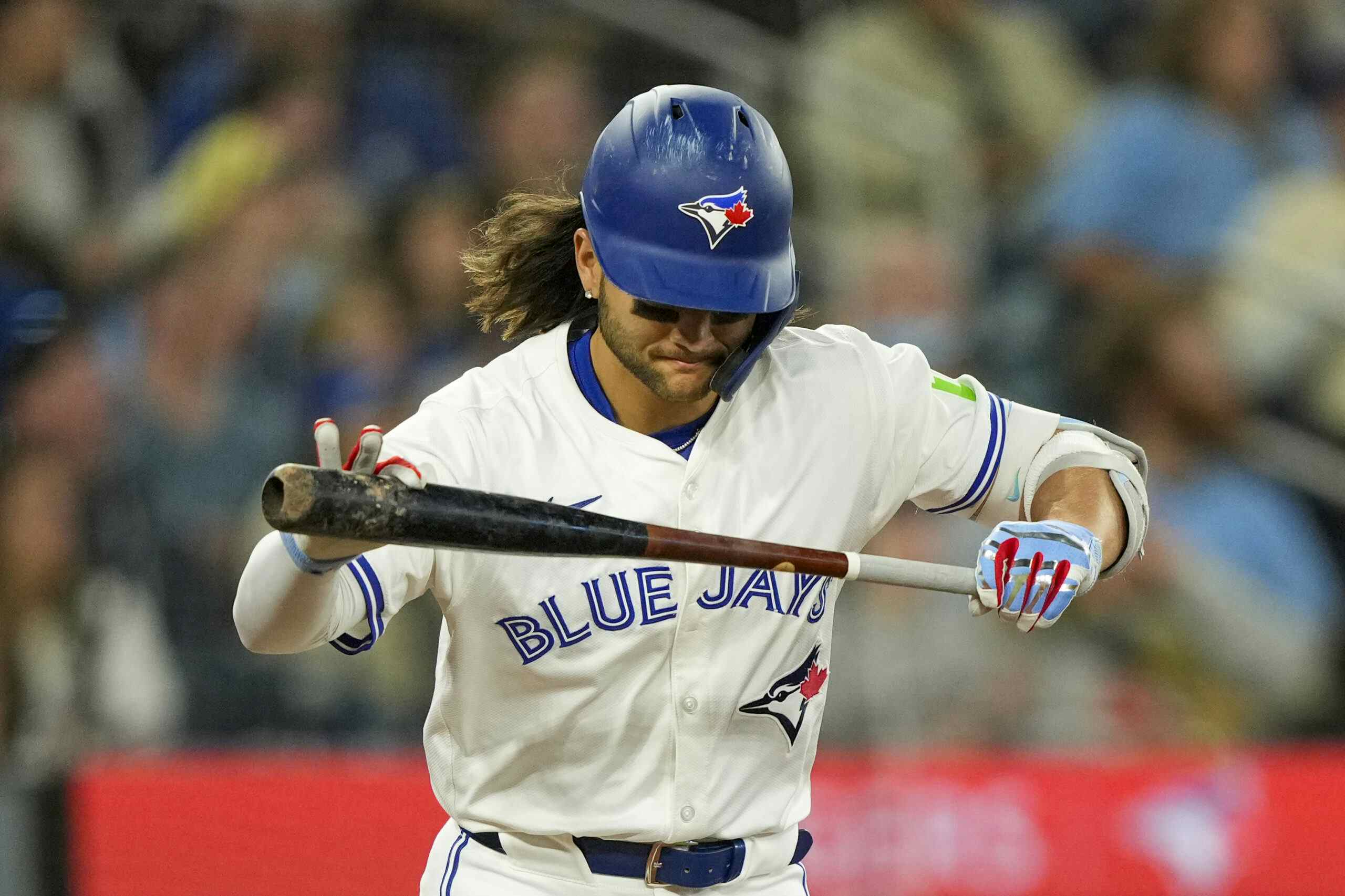Troy Tulowitzki’s Unusual Defensive Style Is All Part Of His Plan, And Vital To the Blue Jays
By John Lott
8 years ago
Photo Credit: Kim Klement-USA TODAY Sports
The pre-game media chat in John Gibbons’ office turned to Troy Tulowitzki, since on opening day he had hit a two-run homer and fielded seven ground balls in his usual style. It is actually an unusual style, especially for a shortstop, and especially for a shortstop who stands 6-foot-3 and weighs 205 pounds, which, of course, are unusual dimensions for a shortstop.
So Tulowitzki is unusual. Neither Gibbons, the Blue Jays’ manager, nor any of the veteran beat writers could think of a shortstop with a similar defensive technique – long arms and legs in perpetual motion, inviting the ball into his glove with a light tap of the hands, whip-throwing on the run, his momentum often transporting him past the pitcher’s mound. He seldom plants his left foot to create a firm throwing foundation, which is something infielders typically learn early in life.
Here is what Tulowitzki learned early in life, back when he played at Long Beach State before the Rockies made him their top draft pick in 2005: everything you do when fielding a ground ball should drive your body toward first base.
“My college coach, Mike Weathers, would never let us backhand balls, so you always had to get around everything,” Tulowitzki said before Monday night’s game at Tropicana Field. “Obviously, at the big-league level you have to backhand balls sometimes, but I think that made me realize at a young age to use my feet better. Really, in college, I had no choice but to get in front of the ball.”
So Tulowitzki’s approach is to “circle” a ground ball to position his body, to the extent possible, in the direction of first base. Many good infielders circle the ball, but they typically set their feet to make a true throw.
Tulowitzki? “He throws on the run all the time,” Gibbons observed.
***
Well, not quite all the time. In the second inning of the Blue Jays’ 5-3 win over the Rays on Monday night, Curt Casali came up two outs, a runner on second and a run in. Casali scalded a one-hopper to Tulowitzki’s right. There was no time to circle this one. It nearly bounced over his head, but he stepped back, shot up that long left arm, snared the ball, planted his back foot and threw Casali out. The play saved a run.
It was a small play in a game that turned tight at the end and featured homers by Michael Saunders, Josh Donaldson and Josh Thole (yes, Josh Thole), a sensational head-to-the-wall catch by Kevin Pillar and a touch-and-go pitching performance by a committee of five. (“I just pitched well enough not to get beat,” said starter R.A. Dickey.)
But small plays – like Thole’s block of a couple of errant knuckleballs that might have prevented two runs – can add up to big savings, especially in close games. And Tulowitzki has saved plenty over the years.
He has the highest fielding percentage (.9856) of any shortstop, ever, and the highest range factor among active shortstops. Playing a busy position, he has never made more than 11 errors in a season.
And, of course, he is also one of the most potent offensive shortstops in history. In his short time as a Blue Jay, Toronto fans haven’t seen him at his best with the bat yet, but the way Gibbons looks at it, Tulowitzki’s offence is secondary.
“He (makes) such a huge difference, even if he doesn’t hit a lick,” Gibbons said.
***

Photo Credit: John Lott
Tulowitzki said his unusual defensive approach came naturally, but over the years, he has raised his own bar, focusing on refinements, in part because they’re effective and in part to reduce the wear and tear on his body.
“I just felt like it was better suited for me to be aggressive, to allow myself to always be moving toward first base,” he said. “When I did that, it just made me a better defensive player. The game just sort of came to me a little better.”
He came to believe that staying back on balls, setting his feet and throwing hard was tougher on his body. So he made a point of avoiding it.
“It’s just something I started to realize, with an idea of taking the stress off my body as far as always sitting back on things – to be kind of like you’re gliding out there,” he said.
That glide is his trademark, along with a sidearm throw that somehow looks artful. All of it is by design.
“When you watch a hitter or watch someone that looks very effortless, that looks like a graceful kind of athlete, that’s what I’m trying to apply on defence – trying to make things look easy, even though they obviously aren’t,” he said. “There were some plays before where I felt like I was working too hard, where now I feel like I’m going through the motions, but in a good way.”
Taking grounders before each game, he works hard at going through the motions, focusing on sound fundamentals that incorporate minimal effort.
He has landed on the disabled list six times in his 10-year career, so injury prevention is front of mind in his preparation.
“In anything, I think you learn how to take care of your body,” he said. “You learn when to push the envelope and when not to, on the base paths, defensively. When I was really young, I dove after every ball, even if I knew I couldn’t get to it. Now you won’t see me do that unless I can get to the ball. That’s just saving my body from that wear and tear.”
***
Early in spring training, Tulowitzki drew a lot of fan buzz because he started to use a pronounced leg kick to improve his timing at the plate. As the weeks progressed, Tulowitzki’s kick became less noticeable.
“You’re always trying to find ways to be better,” he said. “That was something I had never tried before. I wanted to see if I could get away with it, see how I liked it. It’s just a way of putting yourself in a position to do different things to see how you like it”.
Josh Donaldson uses the high kick. So does Jose Bautista. Did they influence Tulowitzki in that direction?
“You can always watch on TV and say, ‘I want to do that, but you need to know exactly what the person’s doing to try to emulate it,” he said. “With all these guys in the locker room, I can talk to them about it and what they do to try to do certain things. That’s when I tried to apply it, when I felt like I had enough information.”
He varies his batting technique, he says, based on the pitcher he’s facing and what is working at the moment. He says he has not completely abandoned the leg lift. And he agrees that his regular discussions about hitting techniques with Donaldson – which began immediately after his trade to Toronto last July 28 – have improved his offensive approach.
“He’s very good at that,” he says of Donaldson’s analytical prowess. “And I think vice versa, I’m always talking to him about defence. So we’re both guys that enjoy this game. Obviously, we’re trying to get better. Obviously, we take pride in playing on winning teams and trying to help our team win games every day.”
To that end, Tulowitzki continues to experiment, refining his proven defensive skills and looking for new ways to improve at the plate.
“I’m not afraid to try something,” he says, “and I think that’s what’s made me who I am today.”
***
POST SCRIPT: Some fans were muttering that it’s about time Tulowitzki retire his floppy old glove after an odd play in the sixth inning ofMonday night’s game. As he fielded a grounder off the bat of Desmond Jennings, the ball stuck in the webbing of his glove and he was unable to extract it in time to make a throw. TV replays seemed to suggest that the ball nearly shot right through the webbing. The play led to a Rays’ run.
I asked Tulowitzki about it on Tuesday. “It was a play that should have been made,” he said. “I just reached in and grabbed it the wrong way.” In effect, he said, he pushed the ball too deep into the webbing when he tried to grip it. It was his fault, not the glove’s, he insisted.
Tulowitzki hasn’t kept track, but he thinks he’s been using his raggedy game glove for about five years. He thinks it should last another five. He has no plans to stop using it. He uses it only in games, not in practice.
Recent articles from John Lott





